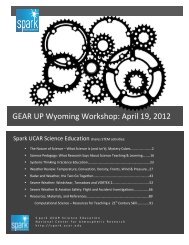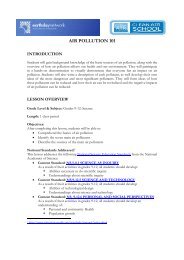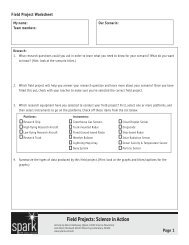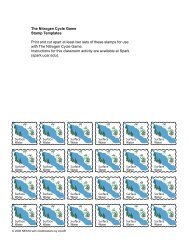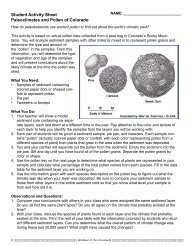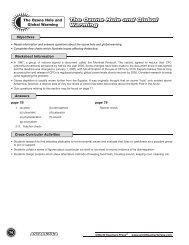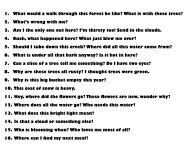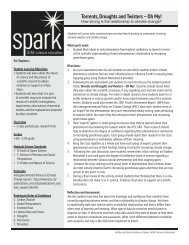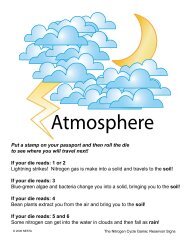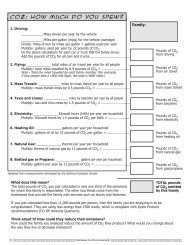Earth's Global Electric Circuit - Spark - University Corporation for ...
Earth's Global Electric Circuit - Spark - University Corporation for ...
Earth's Global Electric Circuit - Spark - University Corporation for ...
You also want an ePaper? Increase the reach of your titles
YUMPU automatically turns print PDFs into web optimized ePapers that Google loves.
Science Sites <strong>for</strong> Kids - Elementary to Post Secondary and Beyond<br />
The sites below highlight some of the best resources online <strong>for</strong> various ages to learn about electricity and<br />
science relevant to the <strong>Global</strong> <strong>Electric</strong> <strong>Circuit</strong> research.<br />
A = Advanced MS = Middle School Level G = General, All<br />
<strong>Electric</strong> Ben Franklin (G) – Ben Franklin is one of the most well-known people in American history. In addition<br />
to his involvement in government and the printing industry, Franklin was a great innovator in science<br />
and technology. Learn about his famous kite experiment and his other electrical research by visiting<br />
this in<strong>for</strong>mative interactive site dedicated to his life and work. While you’re there, don’t <strong>for</strong>get to watch<br />
“The Ben Show.” http://www.ushistory.org//franklin/index.htm<br />
<strong>Electric</strong>ity and Magnetism Experiments (G) – This site describes more than a dozen exciting electricity<br />
and magnetism experiments designed <strong>for</strong> a fourth-grade level. The experiments introduce important<br />
concepts, such as why resistors are resistant to electrical flow.<br />
http://www.galaxy.net/~k12/electric/index.shtml<br />
Electronics <strong>for</strong> Kids (G)– This site introduces elementary students to the basics of electronics by showing<br />
how magnetism, static electricity and simple circuits work. http://users.stargate.net/~eit/kidspage.<br />
htm<br />
Frontiers of Earth System Dynamics at the <strong>University</strong> of Colorado (A) – This is the official website <strong>for</strong><br />
the NSF-sponsored research on the <strong>Global</strong> <strong>Electric</strong> <strong>Circuit</strong>. Here from the scientists themselves through<br />
video interviews made available on the site. http://sisko.colorado.edu/FESD/<br />
Interactive Plasma Physics Education Experience (MS) – This site provides interactives aimed at middleschool<br />
students and older to learn about energy, matter, electricity, magnetism, the laws of motion and<br />
related topics. It is designed to make abstract concepts concrete and easier to understand.<br />
http://ippex.pppl.gov/interactive/<br />
Magnet Man (G) – This website is devoted to magnetism and the cool experiments you can carry out<br />
with permanent magnets and electromagnets. It includes basic activities appropriate <strong>for</strong> elementary students<br />
to more advanced appropriate <strong>for</strong> high school. http://www.coolmagnetman.com/magindex.htm<br />
FOSS Web Magnetism and <strong>Electric</strong>ity Module (G, MS) – This is the official site <strong>for</strong> the FOSS science curriculum<br />
and includes a collection of interactive materials on electricity and magnetism aimed at elementary<br />
and middle school students that is both engaging and educational. http://www.fossweb.com/<br />
modules3-6/Magnetismand<strong>Electric</strong>ity/<br />
SRP Virtual Power Plant Tour (G) – This site shows how electricity is generated at a power plant. Using<br />
sound, animation, video and games, Salt River Project (SRP) brings the power plant to life allowing the<br />
user to visit virtually. http://www.fossweb.com/modules3-6/Magnetismand<strong>Electric</strong>ity/<br />
Caltech Physics Applets (A)– This site was developed <strong>for</strong> CalTech physics students but why not learn<br />
about electricity and magnetism through their exceptional intereactive applets? A circuit tutorial demonstrates<br />
how a resistor, a capacitor and an inductor react with one another; another applet illustrates<br />
the electric fields surrounding variously distributed charges; others demonstrate concepts relating to<br />
moving charges, magnetic fields and inductance. http://www.cco.caltech.edu/~phys1/java.html<br />
18.<br />
Exploring <strong>Electric</strong> Fields (A) – This site offers an interactive electric charge field simulator. Charges are<br />
placed in a plane area where field lines can be traced or deleted along with charges. The site offers a bit<br />
on theory and additional details to explain the use of the program. http://www.gel.ulaval.ca/~mbusque/<br />
elec/main_e.html<br />
Fizzics Fizzle Fizzics Fizzle (A, MS, G) – is a site that offers physics interactive applets and content. Click<br />
on the appropriate Beginner, Intermediate, or Advanced section to review content on electricity and magnetism<br />
at your appropriate level. Intermediate and above assumes basic knowledge of algebra and trigonometry.<br />
http://www.galaxy.net/~k12/electric/index.shtml<br />
NCAR’s High Altitude Observatory (HAO) (A) – This scientific site will expose students to research on the<br />
Sun itself and the many areas of solar physics. Scientists from HAO are active members of the <strong>Global</strong><br />
<strong>Electric</strong> <strong>Circuit</strong> research team sponsored by NSF. http://www.hao.ucar.edu<br />
Learning Online Applet Collection (A) – Electrostatics and Electrodynamics are two areas covered in the<br />
interactive applets available on physic topics at this site.<br />
http://lectureonline.cl.msu.edu/~mmp/applist/applets.htm<br />
Magnet Lab at the National High Magnetic Field Laboratory at Florida State <strong>University</strong> (MS) – Explore<br />
this site and its many activities to learn about magnetic fields through hands-on activities, slides shows,<br />
and more.<br />
http://www.magnet.fsu.edu/education/tutorials/slideshows/fieldlines/index.html<br />
MIT OpenCourseWare on <strong>Electric</strong>ity and Magnetism (A) – There’s much to learn via the multitude of<br />
course offerings online at MIT on electricity and magnetism. You’ll find many multimedia visualizations,<br />
illustrations, and interactivies. http://ocw.mit.edu/courses/physics/<br />
National Energy Education Network (NEED) (G, MS) – NEED designs and delivers curriculum and support<br />
<strong>for</strong> virtually any classroom and at any grade level– from Kindergarten to High School and beyond– from<br />
Science and pre-engineering labs to Language Arts and Afterschool Clubs. Students use hands-on, inquiry<br />
based lessons to explore the physics and chemistry of energy. Their electricity modules are highly<br />
recommended. http://www.need.org/<br />
PhET at the <strong>University</strong> of Colorado (A) – PhET offers fun, interactive, research-based simulations of physical<br />
phenomena from the <strong>University</strong> of Colorado at Boulder. View simulations under <strong>Electric</strong>ity, Magnets &<br />
<strong>Circuit</strong>s. http://phet.colorado.edu<br />
Physics 2000 (A) – This <strong>University</strong> of Colorado at Boulder Website conveys physics concepts and interactive<br />
applets, many on electromagnetism in a manner that is conversational and well conveyed through<br />
animaitons on this award-winning site. http://www.colorado.edu/physics/2000/index.pl<br />
Scientific Models Video from Annenburg (MS) – A scientific model is a “testable idea… created by the human<br />
mind that tells a story about what happens in nature.” Annenburg’s video explaining models helps<br />
students understand the value of scientific models. http://www.learner.org/courses/essential/physicalsci/session2/closer1.html<br />
<strong>Spark</strong> – UCAR Science Education at the National Center <strong>for</strong> Atmospheric Research (NCAR) (G) – NCAR is<br />
one of the partners on the NSF-supported research on the <strong>Global</strong> <strong>Electric</strong> <strong>Circuit</strong>. Find out at the atmosphere<br />
and the <strong>Global</strong> <strong>Electric</strong> <strong>Circuit</strong> itself from their educational site. https://spark.ucar.edu/atmosphere<br />
19.





